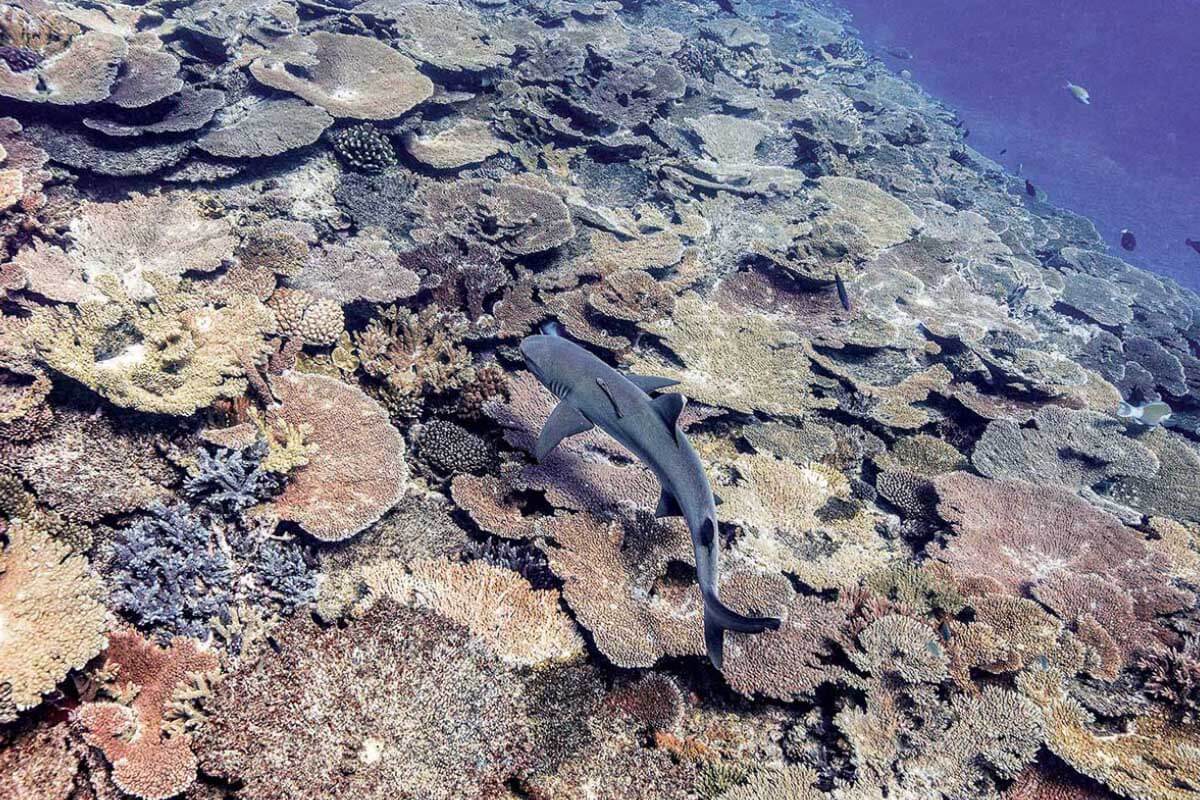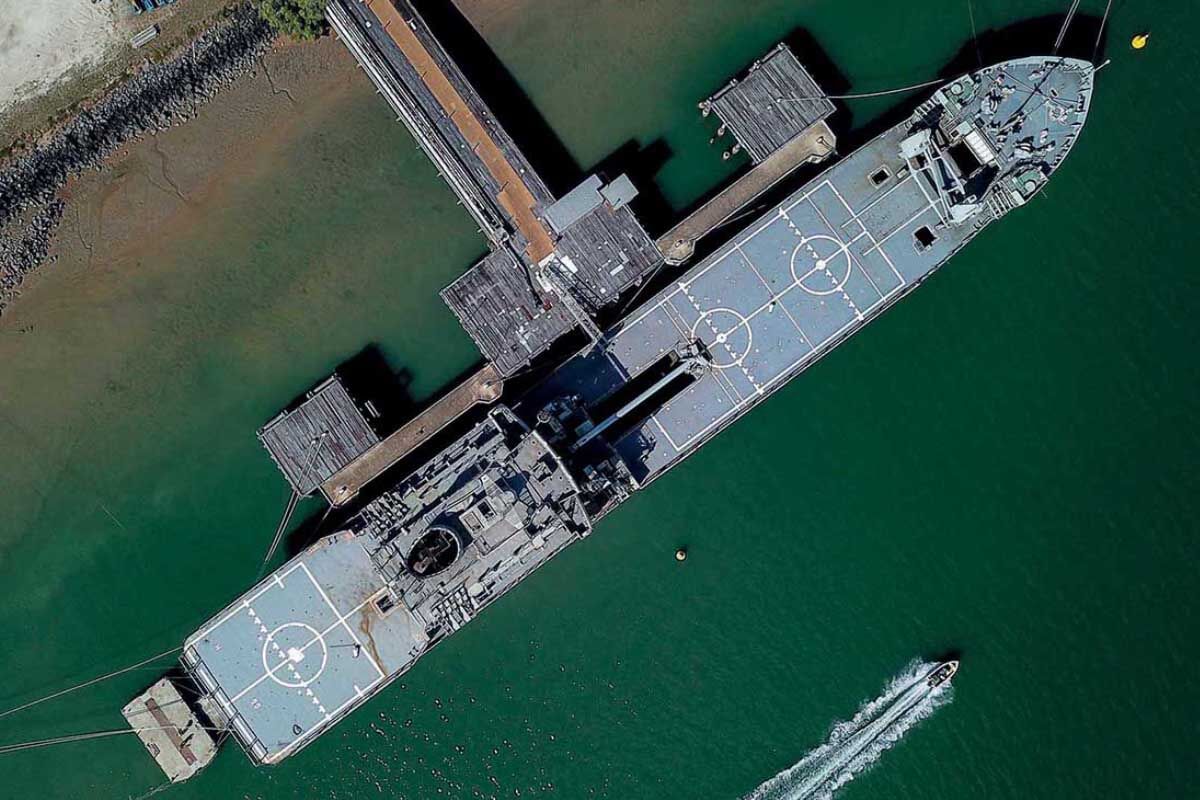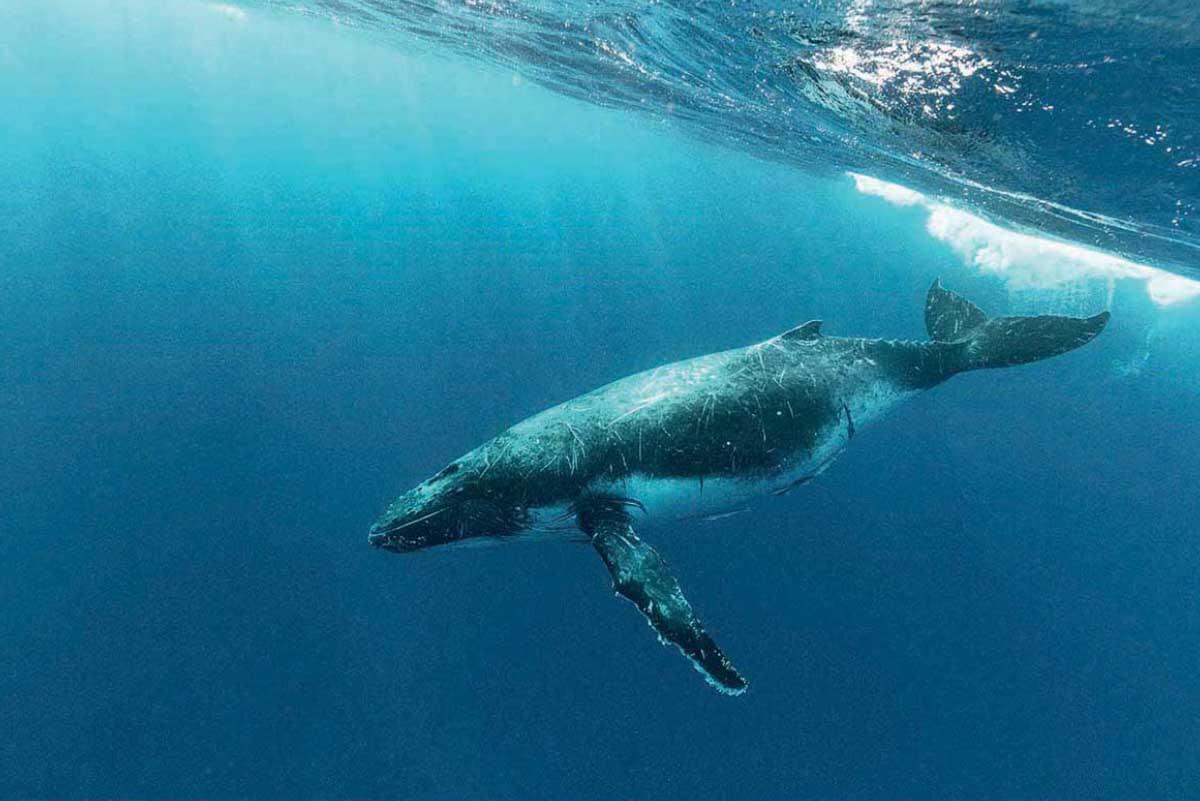
The southern tip of the Great Barrier Reef is often ignored by travelling divers, yet it has lots to offer – healthy corals, plenty of sharks, humpback and dwarf minke whales, and the impressive wreck of HMAS Tobruk, sunk in 2018 as an artificial reef
By Chloe Smith; photos by Tracy Olive
The southern tip of the Great Barrier Reef is far from the diving hotspots of Townsville and Cairns more than 1,000 kilometres to the north – but the little known area has plenty to offer divers.
At its southern end, the world’s largest barrier reef curls towards the Queensland coast where around the city of Bundaberg is one of the few places it is possible to shore-dive its reefs. The small and charming city is also the starting point for diving day trips out to offshore reefs such as Lady Musgrave and Fairfax, which are brimming with marine life and have escaped the worst impact of the coral bleaching which is more prevalent in the warmer waters further north.


Last year, to attract more divers to the area, the Queensland tourism authorities sank a decommissioned Australian Navy landing ship – the HMAS Tobruk. At 127 metres long, with easy-to-penetrate decks, this is an impressive wreck.
The scuttling didn’t go quite to plan. Much to the authorities’ embarrassment, instead of ending upright on the seafloor, the vast barge ended up on its starboard side. At the time, local MP Stephen Bennett deemed the sinking a ‘devastating failure’.
However, after the authorities spent a further $1m AUS (£550,000) opening up the wreck to allow divers safely inside, it has become an awesome dive. You can explore 100m inside the wreck covering most areas of the ship – the holding areas for troops, the crew’s quarters, and the tank deck, with a dramatic causeway more than 20m wide which rises up from inside the ship.
The engine room has been sealed off, as the wreck’s tilted position would make penetration dangerous. The deepest accessible area sits at 28m and the outside of the hull starts at a depth of 12m, making it a safe dive for beginners, but with possibilities for the more experienced to wander through its evocative interior.


In just a year, a staggering amount of marine life has adopted the hulk as home. There is a resident green turtle nicknamed ‘Brookie’ by the guides, groupers and huge schools of batfish and tuna. Watch out for the barracuda, they have already enjoyed one underwater photographer’s finger as a snack.
If you are lucky, you may come across the occasional, passing manta ray, and the jackpot would be to see one of the humpback whales which migrate past the wreck from May to November (hearing them during a dive is far more likely, as they make a lot of noise on their travels).
Local dive operator Brett Lakey describes it as a ‘great dive, saying: ‘The unique layout of the vessel, being an old barge from the navy with a tank deck, allows people to swim up a 20m wide deck.’
Bundaberg, traditionally a farming hub in Queensland rather than a tourist town, is also famous for producing rum – there are tours of the distillery, perfect as you decompress before flying, and you get to try six different types!


The city is also one of the main nesting areas for Pacific loggerhead turtles and there are nightly hatching and nesting tours from November to March. The city (population 90,000) is now dimly lit at night to protect the turtles – previously, bright lights were attracting the hatchlings to an industrial bakery rather than out to the open ocean.
Bundaberg, and nearby Hervey Bay, are the starting points for trips out to Lady Musgrave and Lady Elliot islands, which have some first-class diving. Water temperatures in the subtropical southern stretch of the Great Barrier Reef average about 24 degrees Celsius. It can climb to 26 degrees C in summer (December to February) and drop to 20 degrees C in winter (June to August). Winter has the best visibility, as it’s when the cooler waters flush the reefs.
There is a huge number of big animals on the outer reefs: over two dives at Lady Musgrave and Fairfax we saw groupers, mobulas, zebra sharks and bull sharks. There is a chance of being joined on a dive in the winter months by dwarf minke whales or even a humpback whale, and it is common to spot them at the surface of the ocean from the dive boat.
The Southern Great Barrier Reef is opening up for tourists, but it still has small-town charm and relatively few divers compared to its northern counterpart. The resilience of the coral reefs and abundance of marine life make this a destination to watch.
• Thanks to Queensland Tourism and the Tobruk Experience. A day diving the ex-HMAS Tobruk will cost $260 AUS (£144), including two tanks, weights, morning tea and lunch. A day diving on Lady Musgrave Island including two tanks, weights, morning tea and lunch will cost $340 AU (£190). www.tobrukexperience.com.au
+617 4151 5225



